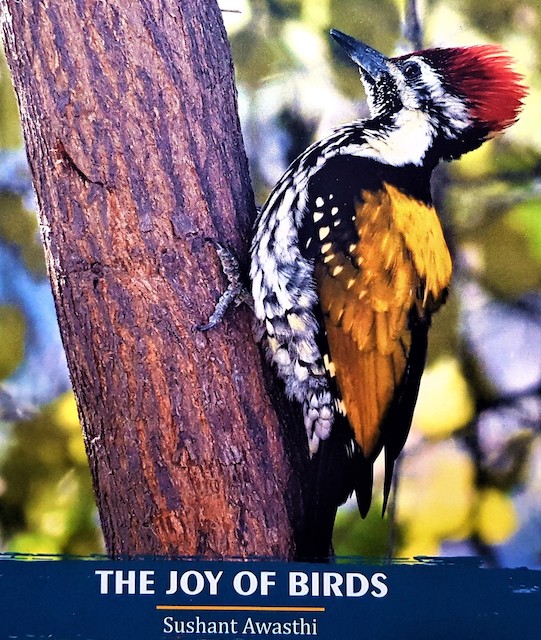From his school days and also while passing through the human anatomy as a doctor, Sushant has lived his passion for photography as a hobbyist.
From Kodak Baby Brownie 127 out of his pocket money to his father’s Zeiss Ikon he carried on with a borrowed Yashika 635. Clicking 35mm Olympus and varied SLRs until the Nikon D5500, presented by his son Abhinav of United States.

Aditi Prabhakar, his daughter, is the lady behind this Coffee Table book ‘The Joy of Birds’.
My wife Vishav Kirti’s classmate, pursuing MBBS, in Srinagar Medical college, I came to know of the artist in him when, years back, he Whatsapped me a flower viewed through his lens.
“Bird photography can be a very satisfying and pleasurable experience but can also lead to some heartache too especially if you miss an opportunity to shoot a particularly exceptional subject.” says Awasthi.
- ‘You are such a talented photographer, and we were thrilled with the results of your work; it is amazing. You have a touch of creativity. The photos look stunning’; we responded.
- We need to know a bird’s behaviour in order to be able to predict its actions. However, being in the right place at the right time gives a perfect picture.
- In the early days of photography, it was difficult to get a photograph of wildlife due to slow lenses and the low sensitivity of photographic media. With the upcoming developments, In July 1906, National Geographic published its first wildlife photos.
- Equipment for wildlife photography can be very specialized and different from many other disciplines.
- Most wildlife lenses have a very long focal length of 150- 600mm, allowing the photographer to get a tighter image of the chosen subject, whilst the majority of wildlife is shot with a telephoto lens.
- ‘Many birds are well-sighted, have a good memory, and can distinguish a large number of color shades; this is why a photographer would be wise to use natural means of camouflage, prepare a shelter in advance or accustom the birds to his presence.’
- A few days back the Forest Department has banned the photography of the Amur Falcon. The migratory bird is known for travelling the longest distance in a year when migrating.
- “..To avoid getting perturbed by photographers, though it is important to take photographs, saving the species is as important, we have taken this decision. Uncontrolled photography in the forest area of Lonavala has endangered the habitat of the Amur Falcon”, says Rahul Patil, Deputy Conservator of Forests (DCF), Pune Forest Department.
- The journey of the Amur Falcon begins in the cold. From Mongolia, they go to the northern part of China for breeding. After this, they stop in the forests of Nagaland and Manipur to rest. They then reach the Arabian Sea via Maharashtra and Karnataka. They have a short rest in the cold of the Pune area. They then cross the sea from the Konkan coast to Africa.
- For many species, these journeys take place at night, when skies typically are calmer and predators are less active. Scientists do not have a good understanding yet of how birds navigate effectively at night over long distances.
- Millions of birds travel between their breeding and wintering grounds during spring and autumn migration, creating one of the greatest spectacles of the natural world.
Cities can help migrating birds on their way by planting more trees and turning lights off at night. – https://theconversation.com/
Prof. (Er.) Chander P Mahajan is an art critic & a free lance journalist. The Environmentalist stays in Shimla and Dalhousie, Himachal Pradesh, India.








